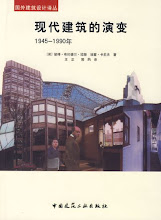Friday 31 May 2013
The Architectural Consequences of Shared Endeavour
The month of June sees the publication of the latest volume in the Ashgate Studies in Architecture series edited by Eamonn Canniffe
The Collaborators: Interactions in the Architectural Design Process
by Gilbert Herbert and Mark Donchin
Illustrated by critical analyses of significant buildings, including examples by such eminent architects as Adler and Sullivan, Erich Mendelsohn, and Louis Kahn, this book examines collaboration in the architectural design process over a period ranging from the mid-19th century to the late 1960s. The examples chosen, located in England, the United States, Israel and South Africa, are of international scope. They have intrinsic interest as works of architecture, and illustrate all facets of collaboration, involving architects, engineers and clients. Prior to dealing with the case studies the theoretical framework is set in three introductory essays which discuss in general terms the organizational implications of partnerships, associations and teams; the nature of interactions between architect and engineer; and cooperation and confrontation in the relationship between architect and client. From this original standpoint, the interactive role of the designers, it examines and reinterprets such well-known buildings as the Chicago Auditorium and the Kimbell Art Museum. The re-evaluation of St Pancras Station and its hotel questions common presumptions about the separation of professional roles played by its engineer and architect. The account of the troubled history of Mendelsohn's project for the first Haifa Power House highlights the difficulties that arise when a determined and eminent architect confronts a powerful and demanding client. In a later era, the examination of the John Moffat Building, which is less well known but deserving of wider recognition, reveals how the fruitful collaboration of multiple architects can result in a successful unified design. These case studies comprise a wide range of programmes, challenges, personalities and interactions. Ultimately, in five different ways, in five different epochs, and in five different circumstantial and cultural contexts, this book shows how the dialogue between the players in the design process resonates upon the works of architecture that their collaboration engenders.
Tuesday 28 May 2013
Saturday 25 May 2013
The Architectural Consequences of the Textile Block
Another addition to the Ashgate Studies in Architecture series edited by Eamonn Canniffe
On Frank Lloyd Wright's Concrete Adobe: Irving Gill, Rudolph Schindler and the American Southwest by Donald Leslie Johnson
During the period of 1919-1925, Frank Lloyd Wright worked on five houses and a kindergarten in the metropolitan Los Angeles area using concrete blocks as the main building material. These have variously been described as being 'uniquely molded', 'woven like textile fabric' and it was perceived as a groundbreaking, modern or unprecedented construction process. There were moments when Frank Lloyd Wright himself claimed to have invented this system. Many have attempted to uphold his claim, while others said he borrowed from ancient buildings. For the first time, this book brings together Wright's declarations, the assertive support by others and the accuracy of inferences in order to determine the correctness of these claims. It tests their veracity including the possibility of feigned, imagined or made-up stories presented as proof. It examines technical developments for concrete blocks, both by Wright and others, before his experiences in Los Angeles began in 1919. It also analyses the manner of Wright's design process, as well as relevant pictorial and textual documents and a study of those extant buildings. The book provides a unique, in-depth and critical analysis of Wright's concrete block houses, set within their historical, biographical and theoretical contexts. In particular, it shows the full impact upon Wright of his contemporaries, architects Irving Gill and Rudolph Schindler. In doing so, it allows a full appreciation of Wright's, Gill's and Schindler's buildings beyond their architectonic and experiential qualities.
Wednesday 22 May 2013
Sunday 19 May 2013
Thursday 16 May 2013
Monday 13 May 2013
Thursday 9 May 2013
Subscribe to:
Posts (Atom)





























































